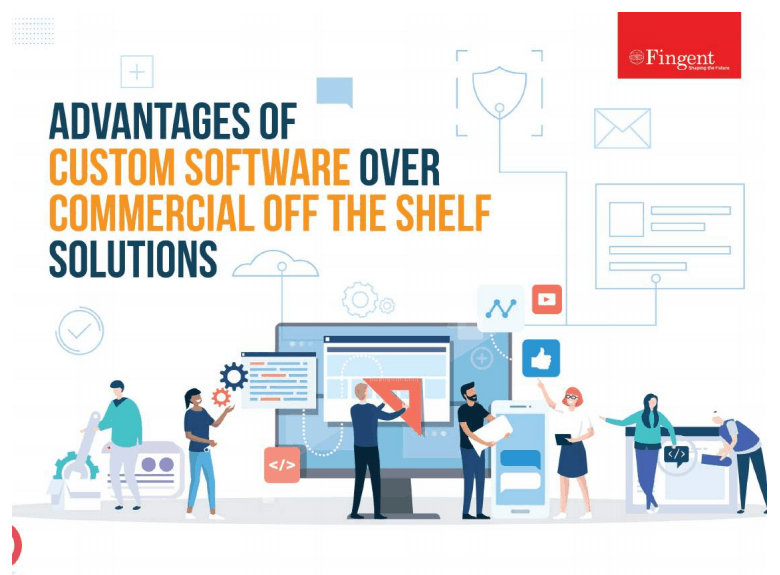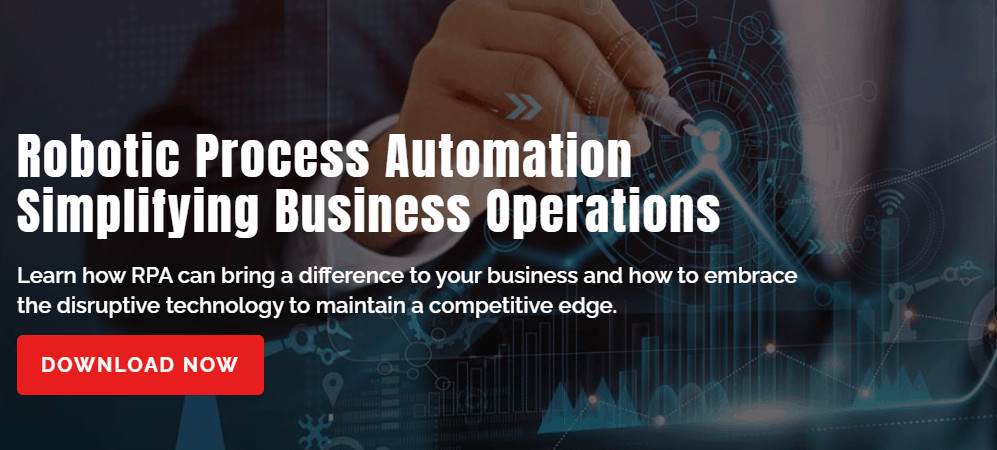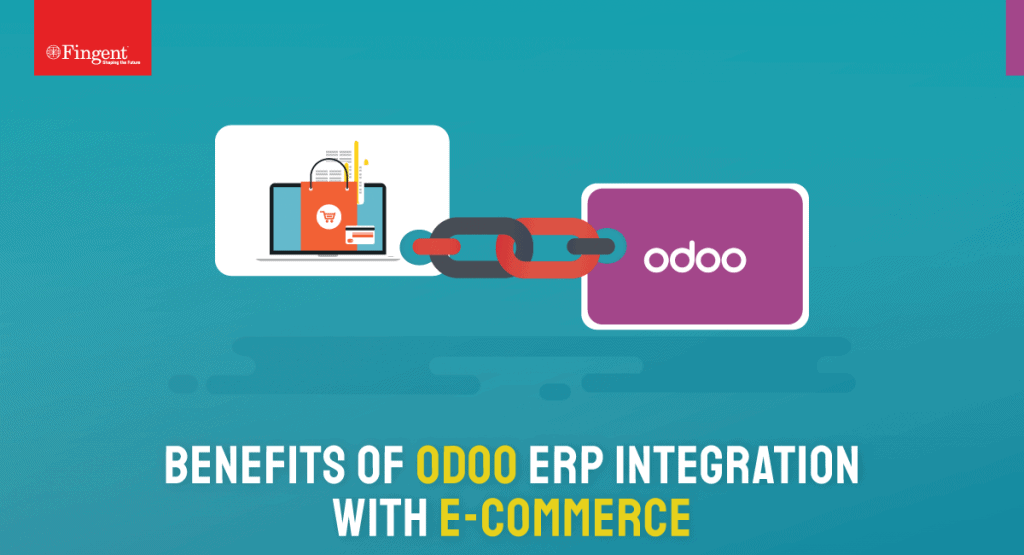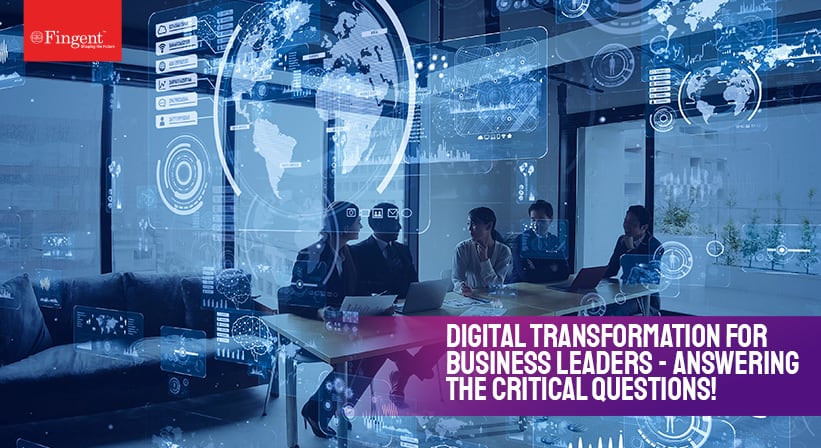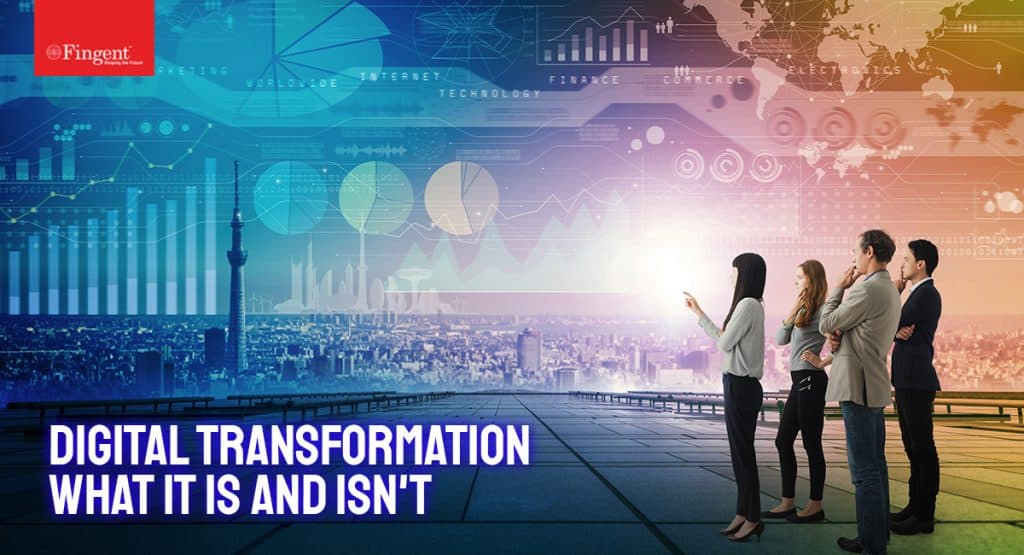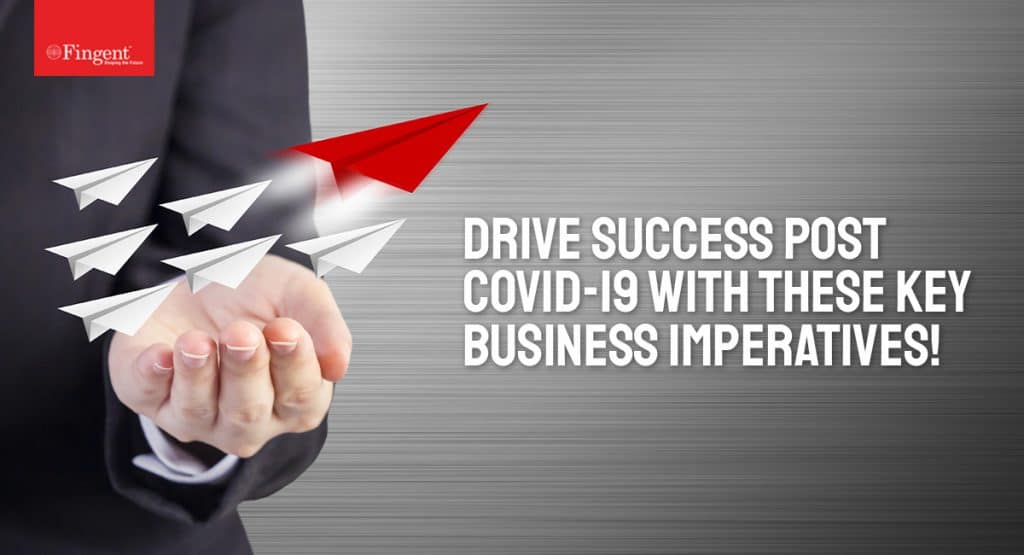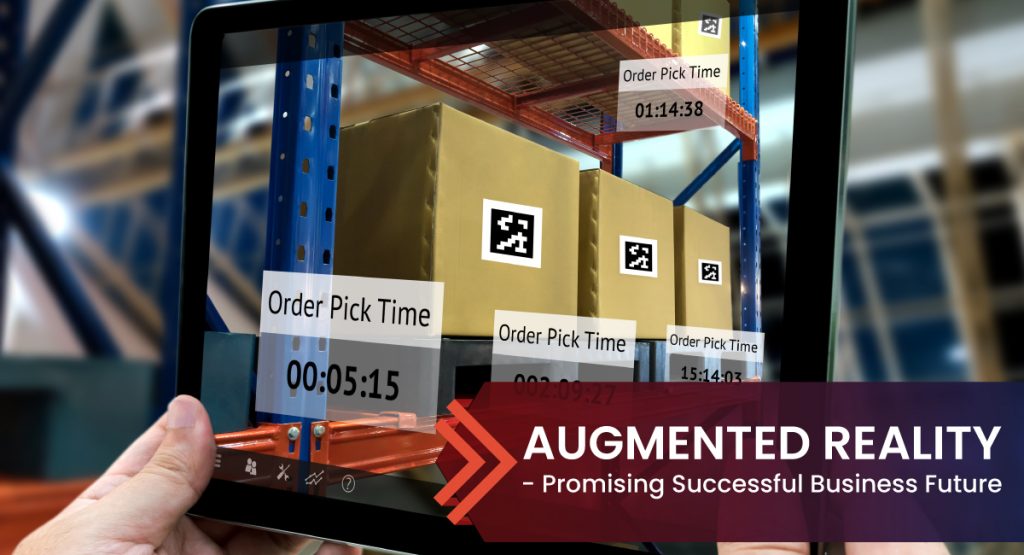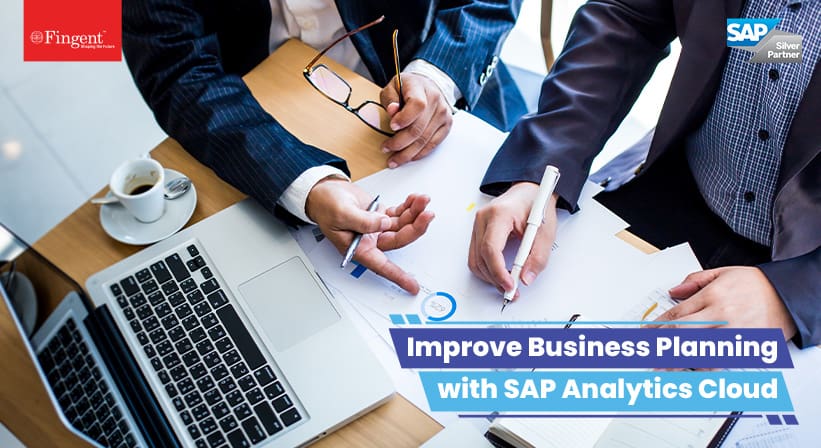Category: Digital Transformation
The pandemic is now the biggest and most critical challenge of traditional banking. Some of these challenges are revenue pressure, data security, customer service management, data collection and analysis, risk management, and so on. These are the warning lights and alarm bells that call for caution over emerging risks. AI (Artificial Intelligence) has gained recognition as an effective solution.
AI is empowering the banking industry to provide individualized frictionless customer experiences. It is driving customer loyalty and profitability by automating banking processes.
In this article, we will discuss how AI can resolve banking challenges. We will also discuss some of the common challenges banks might encounter in implementing AI and how a tech partner can help deploy AI better.
How AI Can Resolve Banking Challenges?
AI is the new electricity – Andrew Ng.
Modern technology such as AI can be tailored to the specific needs of the banking sector. The digital age is opening up new opportunities. According to a Business Insider research report, banks are expected to save an estimated $447 billion by 2023 with the help of AI applications. Given that, here is how AI can resolve some challenges.
Read more: Digital Transformation in Financial Services: All You Need to Know
1. AI-enabled conversational interfaces
Chatbots are one of the most popular cases of applying AI in banking. Bots are programmed to communicate with thousands of customers with minimum expense. Insider Intelligence estimates that the adoption of chatbots could save the banking sector $11 billion annually by 2023.
Mobile banking has become the most popular and chatbot services attract users’ attention and create a unique brand identity. AI functionality in mobile apps is helping banks generate more revenue than when customers visit their branches. Banking organizations that leverage AI improve their quality of services and remain competitive despite the crisis.
2. AI-enabled data collection and analysis
Banks generate an enormous amount of data every day. Collecting and recording this data is an overwhelming task for employees. Besides, all this work may be a wasted effort if there is no proper plan to use this data. Hence banks need to determine the relationship between the collected data. That is another major challenge.
AI-based apps improve the user experience by collecting and analyzing data. The collected data then can be used to grant loans or fraud detection.
3. AI-enabled Risk management
Providing loans is a challenging task for bankers. Extension of credit to a fraudster can get the bank into difficulties. Or a borrowers’ economic downturn can adversely affect the bank. 2020 statistics show that credit card delinquencies in the US alone rose by 1.4% in a duration of six months.
AI-enabled systems can appraise a customer’s credit history more accurately. Additionally, AI-powered mobile banking apps track financial transactions and analyze user data to help banks anticipate the risks associated with the extension of credit.
4. AI-powered data security
Credit card fraud is on the rise. It is the most common type of personal data theft. AI-powered systems can analyze customer behavior, location, and financial habits. So, if it detects any unusual activity, it triggers a security mechanism immediately.
Read more: Artificial Intelligence and Machine Learning: The Cyber Security Heroes Of FinTech
When all these challenges are successfully tackled, how does the AI-powered bank look like? Read on to find out.
How Does The AI-First Bank Look Like?
AI-bank rises to meet customers’ expectations and remain competitive. The AI-powered bank will offer intelligent and personalized propositions and experiences as it understands customers’ past behavior. It can span across multiple devices providing a consistent experience to its customers.
What Are The Common Challenges Banks Might Face In Implementing AI?
Implementing AI technology in banking is not always easy. You need to ensure you have the right team and expertise. You will also need access to data, resources to invest in the project, and parties that are willing to adopt the new technology.
- Access to data: It is one of the biggest challenges to implementing AI. Additionally, banks might face challenges with training data. It becomes hard to update or improve the AI models if the team does not have the necessary information to use and learn from.
- Localization: Localization is critical to the banking sector as they often need to design models with multiple markets that they serve. Localization can help you properly customize the customer experience. Your data partner can support you with localization as they have skilled linguists to develop aspects such as style guides and voice persona.
- Security and compliance: It is quite challenging to keep all the data confidential and secure. The right data partner can offer a variety of security options. They have security standards to ensure your customers’ data is securely handled. Look for data partners who have strong data protection with certifications and regulations. They will be able to provide secure annotation. They will also provide onsite service options, private cloud deployment, on-premise deployment, and so on.
- Trust, transparency, and explainability: AI models can only be successful if they can be understood and trusted by customers as they will want to be sure that their personal information is handled and stored securely. Talk to your partner and ask them to explain the model to you. Or you can always go back to the training data that was used to develop the model and extract some explainability.
- Data pipelines: Connecting data pipeline components to use siloed data is not as easy as it seems. To do this effectively, banking institutions must ensure their data is collected and structured correctly. They must also ensure that this information enables ML models to predict according to the business goals. Look for a partner with extensive security offering as their expertise will enable your banking service company to be successful and scale.
Read more: The New Untapped Opportunities for FinTech Companies in the Coming Years
How A Tech Partner Like Fingent Help Deploy AI Better?
Implementing AI into banking is a serious responsibility. It takes in-depth knowledge, an enormous amount of time, and dedication to accuracy. That is what Fingent has. We do not just follow the trends. Instead, we focus on how AI can add value to your particular banking needs.
Fingent can bring transparency and explainability of AI automated decision making to your banking processes. We can provide an easy-to-use interface through APIs delivered either on-premise, in the cloud, or as a SaaS offering.
By embedding AI and ML into our products, we can accelerate the release of explainable business models that will underpin new AI use cases. These can help create a seamless customer journey and automate manual processes with self-learning capabilities. We are confident that we can help you deploy AI better. Give us a call and let’s get talking.
Stay up to date on what's new

Featured Blogs
Stay up to date on
what's new



Talk To Our Experts
The global growth outlook remains uncertain. Companies are forced to operate in an environment characterized by unprecedented technological change and evolving consumer demand. The situation demands decisive action! Companies MUST look for new ways to grow and add value if they are to survive. The obvious solution is old business models must evolve and drive innovation. This is the only way businesses can respond to unexpected risks and opportunities. Sustainability plays a vital role here.
Sustainability can reduce the environmental footprint and deliver significant cost savings through cost avoidance. It can offer new growth opportunities and can build brand equity by creating emotional connections and making consumers feel good about embracing sustainable brands. Let’s get right into it and discuss more how you can drive innovation and business success through sustainability.
Let us first understand what innovation really is.
What is Innovation?
According to Merriam-Webster, innovation is “the introduction of something new.” This includes products and services. However, it also includes improvements in business processes or business models.
But sustainable innovation goes a step further. It is boosted and driven by concern for resources and the environment. It involves using concepts and products that were developed as a result of environmentally-aware designs and practices.
Businesses that have integrated sustainability into their innovation processes have framed their discussions around growth and returns. This helped businesses add measurable value for all stakeholders. Proper planning can help industries develop insights for the future. Such planning can guide their sustainability strategy as they develop sustainable innovation goals.
Read more: Prepare for the Future of Digital Innovation with these 10 Services From Fingent
Why Choose Sustainability-Driven Innovation?
Sustainable innovation results in better business models, newer market segments, improved processes, and so on. It caters to consumer demand for greater sustainability.
As a result, businesses can achieve greater economic performance. On the other hand, it also results in a cleaner, healthier, and more stable world – one that propels economic growth! Here are three core reasons why you must choose sustainable innovation over traditional innovation.
1. Contributes to sustainable businesses
Sustainable innovation meets the needs of the current generation without compromising the needs of the future generation. Businesses must actively incorporate issues such as climate change into their innovation processes.
Companies that go beyond seeking immediate profits think long-term. Such companies invest in technologies and people for the future. Compared to their non-sustainable competitors, companies that rely on sustainable innovation bring in better people with personal ethics and thus contribute to sustainable business.
2. Better innovation and more innovation
Sustainability-oriented businesses produce more patents and more impactful patents. These companies think more broadly and learn from different perspectives welcoming insights and solutions from others. This leads to better innovation and more innovation.
3. More resilient
During these turbulent times, it is critical for businesses to remain resilient. Firms that are sustainability-oriented are more likely to experience less share price volatility. They tend to generate more revenues in the long run and thus survive through any crises compared to their competitors.
Read more: Custom Software Solutions: Ideal Way to Build Business Apps
How To Develop A Sustainability Strategy
Sustainability can be a game-changer. It can drive innovation that shapes how key resources are used in products and services. Focusing on reducing waste or finding substitutes can be a powerful driver for sustainable innovative products and operating models.
Companies that combine environmental, societal, and financial priorities to re-imagine their core business models and stay ahead of the competition. A structured innovative strategy reinforces business advantage and the environmental and societal benefits. Here is a four-step strategy that can drive innovation and business success.
Step 1: Endeavor to understand the broader stakeholder ecosystem
Environmental and societal issues and trends might affect the stakeholder ecosystem. So, explore the potential impacts of ecosystem dynamics. This will help you identify a range of business vulnerabilities and opportunities. These can be excellent starting points to develop a sustainable strategy.
Next, explore scaling up the business. Consider where breaking points arise and how risks and opportunities change.
Step 2: Innovate and develop new aspects
Once you identify opportunity spaces, you can now innovate and develop new aspects.
- Change the production inputs
- Create impact by influencing the product usage cycle from cradle to grave
- Increase the environmental and societal value of your products and services
- Expand the value chain
- Shorten and reconfigure the global value chain to enable accurate and secure data tracking
- Encode, endorse, and monetize the full environmental and societal value of products and services
Step 3: Test, iterate and refine
A business with weak profit margins cannot invest in sustainable innovation to amplify environmental and societal benefits. Continue to assess and re-engineer your business model to improve resilience.
Step 4: Scale the initiative by engaging people in the company and its ecosystems to expand impact and advantage
This can be achieved by leveraging three enablers:
- Partnership with other organizations within or across the sectors
- Digital technology can be leveraged to reach previously unserved or underserved populations
- Develop cultures and leadership values that attract and engage people inside and outside your boundaries
- Keep in mind the future landscape
This four-step sustainability strategy offers companies a way to systematically integrate the social and business value in your business. This strategy will help you take on innovation for both business and social value.
View infographic: What are the advantages of custom software over commercial off-the-shelf solutions?
3 Ps
It is a mistake to look at sustainable innovation as a short-term endeavor. Industry leaders must help their organization develop an effective and reliable strategy for sustainable innovation. The three Ps you will need to know to enable this are as follows:
- Purpose: Have a purpose that goes beyond profit maximization. Such a purpose will guide the sustainable innovation process to success. Industry leaders must weave sustainability into the organization’s DNA. This is only possible when they encourage and nurture out-of-the-box thinking where sustainability becomes an integral part of the business.
- Process: A successful innovation planning process must include specific sustainability requirements and performance targets. Sustainable innovation must be central to the innovation cycle, not just an additional step. Make sure you integrate sustainability into innovation planning.
- Partnership: Build strong external networks. This will bring in fresh innovative ideas. Working collaboratively with your partners can help accelerate existing projects or even kick-start fresh ones.
It is clear that innovation through sustainability is a megatrend that is here to stay! Where do you start? How can technology help you? Give us a call and let’s get talking about all the questions you have.
Stay up to date on what's new

Featured Blogs
Stay up to date on
what's new



Talk To Our Experts
As digitalization is gaining a lot of significance, many enterprises are turning to emerging technologies such as Robotic Process Automation(RPA) to streamline their operations and reduce costs. RPA automates mundane processes allowing organizations to devote more time to serving customers or other important work.
According to Gartner, Inc. , Global RPA software is projected to reach $1.89 billion in 2021, an increase of 19.5% from 2020. Despite the COVID-19 pandemic, the RPA market is estimated to grow two times by 2024.
Read more: How to accelerate your business growth with Robotic Process Automation
What is RPA?
In simple terms, RPA is an application in which a software bot leverages a combination of automation, computer vision, and machine learning technologies to automate repetitive and high-volume tasks.
RPA solutions are best suited for processes that are labor-intensive, repetitive, and have predictable interactions with IT applications. Typically, these processes may be too small in value to be automated via IT transformation. RPA tools help improve the efficiency and effectiveness of such processes without changing the existing infrastructure.
RPA software bots can perform various business processes by mimicking how humans interact with applications through a user interface and simple rules to make decisions. As a result, robots can complete the entire end-to-end process with very little human interaction.
Benefits of RPA include;
- Improved accuracy
- Flexibility and scalability
- Speeds up the processing time
- Better employee morale
- Reduces manual and repetitive tasks
- Enables better customer care
- As per Forrester, projects see a 15-month payback, 229% ROI on average
Key business challenges RPA helps address are;
- Login automatically into a system as a user
- Helps navigate around the software, using menus and shortcut keys just like a human moving the mouse or typing on the keyboard
- Interpret labels to read values from the screen. If the screen content or web page is dynamic, RPA can help find the right value on the screen.
- Read values and data from PDF reports automatically and add them to data tables.
- Inputs values into a capture screen automatically by mimicking the user’s actions. However, it can process it several times over with different values for each pass.
- Read emails and messages to understand the information they contain. For example, is the sender placing an order, making a booking, looking for information, or sending an invoice? Based on the intent, RPA will trigger the process with the message.
- Help trigger a process in a system by logging in as a user and clicking buttons.
- Collate different pieces of information and identify the next best action in the process.
Read more: How Can Businesses Overcome The Barriers To RPA Adoption?
Who is using RPA?
RPA can be leveraged by any business, especially if it involves repetitive tasks such as banking, healthcare, finance, insurance, and telecommunications. For example, RPA can be used in finance to automate governance, reconcile accounts, or process invoices. Additionally, RPA can help automate processes such as data entry, predictive maintenance, and after-sales service support in the supply chain.
Telecommunication companies utilize RPA solutions to organize new services and all the related billing systems for new accounts. RPA also helps these companies pull data from multiple systems when old equipment outages or predicts problems.
Regardless of the industry, RPA benefits the larger organizations and small and mid-size companies with its ability to streamline business processes and improve efficiency.
Should you invest in RPA?
The pandemic has caused a sudden surge in RPA as businesses are turning to cost-effective solutions to fill the workforce gap due to a shortage of employees. But again, if there is a lack of data or the process is obsolete, opting for RPA may not be a wise decision.
With the RPA market evolving, it is becoming affordable for even small and mid-size businesses who want to stay ahead of their competitors. According to the Grand View Research report, in 2019, the large enterprise segment accounted for over 67% of the global RPA while the BFSI led the market in terms of application with over 29% share of the global revenue. However, from 2020-2027, it is estimated that SMEs will witness the highest CAGR, with the pharma and healthcare sectors leading the way application-wise.
While RPA can fill the gaps in the current system and benefit the organization as a whole, companies that have large volumes of data and time-consuming business processes with well-defined rule-based steps are ideal candidates for RPA implementation.
Once the decision-makers finalize the processes that need automation, assessing ROI for individual processes is essential to quantify the benefits. A successful deployment takes one-two month, and the ROI is approximately three-twelve months.
Read more: An Extensive Whitepaper on How RPA Can Bring a Difference to Your Business
Things to consider before implementing RPA
1. Third-party integration
You will have to redesign the existing Robotic Process Automation processes and ensure they are compliant with third-party tools. It improves the scope of what RPA can achieve for a business process. For example, ERP and CRM integration is something that you must consider.
2. Cost-effective
For RPA to become a cost-effective solution, an organization needs to know which tasks are suitable for automation. Ideally, mundane and repetitive labor-intensive tasks need to be automated to impact a direct bearing on the costs of the RPA deployed. As bots work more efficiently than humans, it results in better productivity, fewer errors, and cost less. All this impacts productivity in a significant way making RPA a worthy investment.
3. Training time
For a smooth roll-out of implementing the RPA system, organizations will have to set aside time to train their employees. Therefore, you will have to be certain about the time required, especially if you plan to implement RPA across functions.
4. Deployment speed
Typically, the speed at which an organization deploys an RPA software depends on how soon it wants to reap its benefits. While some businesses cannot wait to take advantage of the RPA system, others are skeptical about their roll-out plans. In most cases, businesses that wish to implement an RPA system adapt to save costs as quickly as possible.
How can Fingent help?
If you’re looking to improve profitability, productivity, and compliance with Robotic Process Automation, contact our experts today. Our experts will not just help you strategize an automation process but also get the most out of your investment by identifying the best time to introduce RPA into your business.
Stay up to date on what's new

Featured Blogs
Stay up to date on
what's new



Talk To Our Experts
The impact of the pandemic on consumers across the globe has dramatically changed their demands, needs, and behavior. Many of these changes have critical implications for businesses in most sectors. To succeed in the next normal, businesses must respond proactively.
COVID-19 jolted consumer demand in a way that sets it apart from past disruptions. As a result, customer loyalty took a hard hit. Executing the four Ps of marketing (optimization of product, price, place, and promotion) became more complex than ever. Businesses must redouble and broaden their efforts toward meeting ever-changing customer demands and behavior.
As with everything else, it is important for an organization to know and understand its customers. If your company is at crossroads with today’s Ecommerce customers’ needs, this article will help you understand how technology can help satisfy these uprising demands quickly and effectively. So then, let’s first understand how customer behavior, needs, and demands change.
Read more: What are 3D Web Configurators? How do they Boost Ecommerce Sales and Drive Customer Satisfaction?
Ecommerce Customers’ Behavior, Demands, and Needs
Customers are like the moving targets. The key to success is to understand their behavior trends and use technology to help satisfy these uprising needs and demands. Linnworks research pointed to five such trends:
- Convenience is the need of the hour: 76% of consumers feel that convenience is the top priority in choosing a retailer. 90% of shoppers focus on using a trouble-free online store.
- The frictionless shopping experience is most valued: It was noted that 58% of consumers abandoned an online store altogether because they were difficult to use.
- Omnichannel shopping is gaining traction: One in three consumers has purchased an item while on social media. 71% of consumers prefer to complete a purchase on a social site without having to exit to the retailer’s site.
- Consumers demand flexible payment options: Four in five shoppers expect the “buy now, pay later” payment option.
- Delivery convenience: 95% of consumers say that fast and reliable delivery methods play a crucial role in their decision-making.
How Can Technology Help Satisfy these Uprising Needs and Demands of Today’s Consumers?
1. Allow your consumers to experience products before they buy
The biggest roadblock facing Ecommerce businesses has been the inability of consumers to experience products before they buy. Everyone likes to try on clothes they like to buy or see how is their new couch looks in their living room.
This is where AR (Augmented Reality) can help your business. AR can help your consumers try on clothes or closely inspect the components of a mobile device. AR market is expected to reach 2.54 billion by 2023. Online retailers who fail to take full advantage of this technology may likely experience business disruption.
2. Bring your product to life with virtual shopping
Virtual reality shopping can bring your products to life. It helps your customers to have an in-store-like experience, without actually being there. VR technology allows you to tag products so your customers can purchase on the spot. It can instantly connect buyers with customer service executives.
VR can make product recommendations based on customer metrics. It can also cater to both desktop and mobile users. Thus, it provides a better customer experience attracting more customers to your online store.
3. Be omnichannel ready
Todays’ Ecommerce customers like to cross-channel research and purchase. So, they expect smooth interactions across these channels and devices. Technology can help you to provide your customers with what they want, when they want it, and where they want it to. Some of these technologies include video chat, screen sharing, document interaction, e-signature, and more.
Co-browsing is an effective visual engagement system. It can bring your sales executives and customers together on the same page, at the same time. This allows your executive to guide your customers through the complex procedures making their customer journey as smooth as it can be.
Read more: Custom Retail Software Solutions: Everything You Need to Know!
4. Enhance customer communication with chatbots and AI
Artificial Intelligence has a major impact on how we live and work. Voice shopping is expected to jump to $40 billion by 2022, rising from $2 billion today. And 45% of millennials have already been shopping using voice assistants.
Chatbots and AI improve customer experience and boost brand image. These chatbots can be personalized to order food, get recommendations for almost anything, receive details regarding payment or order status, and more.
5. Hassle-free checkout process
Inefficient checkout processes can raise the chances of cart abandonment. However, this problem can be avoided by embracing technology that provides quick and efficient checkout solutions.
Technology enables speedy mobile payment solutions, allows your customers to save card details for repeat purchases. Above all, it proves one-page hassle-free checkouts and offers a range of payment options. All these can alleviate any potential difficulties your customers may face at checkout.
6. Enable m-commerce to enhance Ecommerce
Today many shoppers shop on the go. Hence, mobile platforms have gained greater importance. So much so that m-commerce is emerging as a concept. Given that, providing a mobile-oriented shopping experience will certainly help you win potential customers, maximizing your chances of future success.
Ecommerce mobile apps offer continuous engagement with your brand. It can help them familiarize with new and relevant purchasing opportunities. These apps also allow you to market products relevant to the specific geographical location of your customers.
Read more: 5 Reasons to Integrate Your E-commerce Application with Odoo ERP
How Can Fingent Help Deploy These Evolving Technologies For Ecommerce Businesses?
It is one thing to understand your consumer behavior but another thing entirely to implement technology to satisfy their demands and needs. Fingent is here to help you implement these technologies efficiently. We can help you move the needle and dominate your niche in the Ecommerce industry.
Fingent can help you implement those that make sense and put the rest on the back burner. We can aid in the success of your Ecommerce venture by implementing cutting-edge technologies. Our development experts will help you promote your products in new and innovative ways.
Choosing Fingent can help you save a lot of time and money and avoid unnecessary complexity as we can provide all the needed components. Our platforms are easy to manage yet robust enough to house thousands of products. We can handle unique order processes and payment terms for your Ecommerce sales. Let’s get talking.
Stay up to date on what's new

Featured Blogs
Stay up to date on
what's new



Talk To Our Experts
Low code/No code is becoming a fierce upcoming contender in today’s digital landscape. For one, its unique capabilities enable collaboration between business stakeholders and IT teams. And it allows for an unprecedented speed of innovation.
Before the pandemic, companies looked to a Low code/No code platform for its unique benefits. Today though, the COVID-19 pandemic has amplified the importance of low code in remote development.
This article will explain what is Low code/No code development with SAP BTP, and will also discuss how it is changing the future of enterprise resilience.
Read more: Rise with SAP – How Fingent Can Help Explore Business Transformation as a Service (BTaaS)
What is Low Code/No Code Development with SAP BTP
Studies confirm the that market landscape for Low code/No code development technologies will remain on a strong trajectory into the future. We can be confident that more organizations will turn to low code platforms to support innovation and digital transformation.
Low code/No code is a software development approach. It enables the delivery of applications faster with little or no coding. Low code/No code platforms are a collection of tools. They enable the visual development of applications via modeling and graphical interface instead of extensive coding languages.
The term “Low code/No code” is a modern alternative for RAD tools (Rapid Application Development). Today, Low code/No code is especially advantageous for enterprises that are looking for ways to streamline all organizational operations such as procurement, production scheduling, customer data, and order processing without the complication of hand-coding.
These tools empower developers to speed up the process of getting an application to production. All without hand coding! These platforms are a fast and easy alternative to traditional software development. Both professional and non-professional developers (citizen developers) can use Low code/No code platforms to develop apps of varying complexities.
Low code/No code development with SAP BTP (Business Technology Platform) empowers non-IT professionals to develop and launch apps with little or no input from IT. This reduces the IT talent gap. It enables transformation in the development and expansion of organizational capabilities.
Low code/No code platforms are built on Platform-as-a-Service cloud environments. This means it employs visual programming interfaces to solve business problems faster. The best part of it is that it does not require deep technical knowledge as it has a simple drag and drop interface.
However, Low code/No code is not just about the user interface. SAP considered this fact while shaping a part of the SAP BTP strategy. Developers and business experts are no longer limited as they are now empowered with integrated Low code/No code automation tools such as SAP Intelligent Robotic Process Automation SAP Business Application studio and more. These tools enable developers to build Intelligent Enterprises.
Read more: A Complete Guide On Software Product Development Stages And Life Cycle
How Low Code/No Code Is Turning The Future Of Enterprise Resilience
The COVID-19 pandemic has propelled the adoption of digital technologies. The goal of these technologies is to allocate human resources wisely to empower the end-user. Low code/No code is faster and more efficient. It frees up professional developers’ or citizen developers’ time for more complex activities.
Most importantly, Low code/No code builds systemic resiliency and responsiveness into the daily functioning of an enterprise. As enterprises aim to become more future-proof, they see Low code/No code as an immediate and effective opportunity.
According to Gartner’s prediction, by the end of 2025, half of all new Low code clients will come from business buyers that are outside IT organizations. Commenting on pricing, Mr. Biscotti said, “Low code capabilities that support remote work function, such as digital forms and workflow automation, will be offered with more elastic pricing since they will be required to keep the lights running.” Given the benefits and the affordability, the Low code/No code market will see commensurate growth.
How does SAP’s Low code development become the future of enterprise resilience? Please consider the following:
1. SAP offers the necessary sophistication to address complex business processes
SAP users often manage processes that involve a large number of applications linked to a single business process. Plus, a business may need an app that can handle complex tasks such as creating work orders offline for field crews. Low code/No code with SAP gives developers the ability to extend their functionality and solve any business problems.
2. Helps in streamlining work and allow employees to work more efficiently
Low code/No code development with SAP is much easier. Hence, it allows developers to manage repetitive tasks and focus on complex activities. Also, it enables them to focus on best practices across their organization to optimize processes and innovate. Thus, it streamlines work, allowing employees to work more efficiently regardless of their location.
3. SAP Low code reduces technical debt
Most organizations that are adopting digital transformation are discovering that they have large amounts of technical debt. This stands in the way of modernization and optimal user experience. Unfortunately, in some cases, the cost of legacy code exceeds its value-creating a debt.
On the other hand, Low code/No code platforms are designed to avoid technical debt. SAP Low code platform enables your team to discover customizations, estimate the cost of modernizing them and then transform them into custom objects on the Low code/No code platform. Furthermore, the right Low code/No code platform will make it simpler to maintain and simplify future upgrades and migrations.
Read more: Answering the Critical Questions Asked by Business Leaders Today on Digital Transformation!
4. SAP Low code can help your business scale
One of the most important aspects of resilience is the ability to scale as needed. While it is true that hand-coding development will lock in and not allow your business to scale, it isn’t so with SAP Low code.
Because Low code/No code development solutions use open-source standards, they allow you to export your raw source code and adapt it as required. Additionally, cloud-based platforms provide virtually unlimited scalability.
Look To A Resilient Future With Low Code/No Code
SAP BTP is in a unique position to assist many organizations to implement digital transformation. It can help businesses achieve significant productivity gains and improve forecast planning. Looking to the future, the digital landscape is changing.
Enterprises must continue to evolve on their mission for greater speed and agility. SAP Low code/No code platform creates a unified, business-centric, open platform for an Intelligent Enterprise. You can count on SAP for future-proofed resilience. As an SAP Silver partner, Fingent is uniquely positioned to open up all the benefits of its features in a way that is tailored for your business. Give us a call and let’s get talking.
Stay up to date on what's new

Featured Blogs
Stay up to date on
what's new



Talk To Our Experts
Digital transformation is pervasive. It is hard but absolutely crucial. Enterprises need to transform their traditional business or risk sure failure. As new players emerge and disrupt established businesses, you will need a fundamental transformation of your core processes to remain competitive.
This may come with its share of worries though. Some of these dilemmas are obvious and quite common. They can be categorized into five major sections: productivity dilemma, value dilemma, ethical dilemma, leadership dilemma, and the human dilemma.
The right approach to these dilemmas is not taking absolute positioning with one of the concepts. Instead, a combination of the two concepts will bring the most value to your business and your clients.
This compromise or combination is not a one size fits all solution. Each organization must figure out where the right compromise is for its business. Wherever you position yourself between the concepts, know that it will have a significant impact on your business.
Given the high stakes involved, digital transformation can be an anxiety-inducing term. Digital transformation can be especially challenging for enterprises with hundreds of employees, assets worth billions, and established business models. In our experience at Fingent, answering these questions greatly increases your organizations’ chances of getting your digital transformation right.
1. What does Digital Transformation really mean?
Digital transformation involves two parts:
- Transforming to digital: This is about using digital technology as a destination. Simply put, it is reorienting your organization to the strategic use of digital technologies. These technologies may include social networks, cloud platforms, products, and so on.
- Transforming digitally: This is about changing how you take the actual digital journey. In other words, this is about using digital technologies to change the nature of your business transformation.
We have found that the organizations that have implemented both aspects are reaping huge rewards than those that are using just one.
Read more: All You Need to Know About Digitization, Digitalization, and Digital Transformation
2. Where should I begin with Digital Transformation?
Because digital transformation affects so many aspects of organizational operations and customer behavior, it can be difficult to know where to begin. Hence, business leaders need to review the core elements of the business affected by the change.
Here is what you can do: Systematically work through the elements and rank each one by its possible impact and feasibility. Doing so will provide a clearer vision of how your business landscape is changing. It also helps you think through the implications of your business.
3. How to identify which customer journey matters the most?
Every business is aware of its own priorities. For most businesses, their first priority is to use digital technologies to connect internal resources to create a more compelling customer experience.
Focusing on individual interactions with your brand helps ground the transformation by optimizing the customer journey. This helps your organization to identify which technology, process, and capability are needed to deliver a great experience.
Here is what you can do: Map out the customer journey from start to finish. Then, focus on how you can make each touchpoint better, faster, and more efficient. This may require adjusting key performance indicators to track and reward progress on customer journeys.
4. What is the biggest impediment to Digital Transformation?
Lack of collective thinking can be a huge barrier that can block your journey to digital transformation. This happens when there is no up-to-date strategic view of who is responsible for progress and how technology should add value to your business.
Here is what you can do: Provide visible CEO support to build momentum. This would require a clear mandate on things to do, sufficient resources to develop a program, and profit-loss accountability.
5. Is it necessary to ‘Test and Learn’?
Successful organizations iterate until they get it right! Constant testing will help them deliver what customers want and understand why they want it. This approach will prevent organizations from getting caught up in overly deterministic specifications, needless market research, and ineffective long planning cycles.
Here is what you can do to ensure that your ‘test and learn’ is effective: Constantly review the actions of your teams. Also, review the investments against data on all areas of customers’ journey. This will help in increasing incremental sales.
Read more: A Detailed Guide to Understanding Digital Business Transformation
6. How do I know what is the right Budgetary Cycle?
An insufficient budgetary cycle can hamper digital transformation efforts. A flexible budgetary cycle will always be the most effective one, so your investment should be linked to progress.
Here is what you can do: You need not hesitate to pull the plug if key performance indicators fail. On the other hand, you must also be ready to quickly pump in more funding if the performance justifies it.
7. What are the benefits of a Challenger Board?
Remember not all ideas are brilliant. A ‘challenger board’ can ensure that a bad idea does not squander all your resources.
Here is what you can do: Choose people who know your business inside out to form your ‘challenger board.’ Based on their experience and outsider perspective, these experts can quickly uncover problems and identify opportunities for business disruption.
As a second option, you could set up a dedicated advisory board. They can help a company guide its organization through digital transformation.
Read more: Future Proof Your Business With 5G, Edge Computing, And Cloud!
How Can Fingent Help In Your Approach To Digital Transformation?
If your primary concern is speed to market and ongoing work agility, rest assured, Fingent is here to help you. We are experts in AEC, an acronym that stands for Agility, Engagement, and Connectivity.
- Agility: Fingent will enable you to build and implement applications quickly.
- Engagement: Our experts at Fingent can prove appropriate application user experiences for each worker.
- Connectivity: We will make it easy for you to integrate your business with external systems and data sources.
Together with new cloud-based deployment, we at Fingent extend strong support for model-driven organizations. We will help you break through the inevitable barriers and increase your chances of achieving a successful digital transformation. Call us!
Stay up to date on what's new

Featured Blogs
Stay up to date on
what's new



Talk To Our Experts
The entire world is grappling with the scare of the COVID-19 pandemic. Given the uncertainty of the pandemic, Human Resources departments across the globe went into overdrive to map out all possibilities that employees would undergo. Previously, HR departments were concerned with compensation, compliance, and benefits. However, with changing times, their role as HR professionals evolved. Today they are supporting the greatest assets of their company: Employees!
Beyond hiring and growth, HR professionals are now seen as strategic partners for every department within an organization. The resilience of an organization and its people depends on the strength of the HR department. It plays a vital role in boosting the economy. HR professionals cushion the sudden shift in workplace culture and equip the team for the future of work.
The pandemic has suddenly brought in industrial shifts. Understanding these shifts is the key that helps in keeping pace with the rapid developments across the organization. That is why HR professionals are called the pulse of any organization. However, this is not easy as they face several challenges.
Read more: Why Develop a Custom Platform for Remote Employee Hiring and Onboarding?
HR Professionals Face Increasing Challenges
In a remote work setting, technology continues to have a direct impact on the day-to-day work of employees. So, HR leaders must plan their technology investments more carefully than ever before.
Additionally, HR professionals may face challenges from their employers and employees whom they serve. Hence, HR personnel must identify upcoming challenges. This will help them to use technology to facilitate more informed decisions faster. Here are a few challenges:
1. Recruiting and retaining employees
Employers must hire candidates with an appropriate degree, skills, and experience. Plus, these candidates must be a good fit with the organizational culture. Once a candidate is hired it is important to retain the best worker through a successful employee engagement approach.
2. Bridging the gap between the employer and the employee
It is important to ensure that a qualified candidate does not slip through the cracks. This job needs to be thorough, requiring HR professionals’ full attention. This is also time-sensitive because the talent could be easily snatched by a competition.
Hence HR professionals need technology that can streamline the process of job postings, interview scheduling, hiring workflows for more efficient results. It should also improve accuracy and save the time of HR and applicants alike.
3. Pressured for faster decision-making
Most companies rely on data to make key operational decisions. To make informed decisions they must identify areas of exposure to and devise effective solutions. The pandemic showed us all that the work environment can change suddenly without warning. Hence, HR professionals need to have new information at their fingertips to predict the effect of change on their organization and make needed changes quickly to ensure the survival of their company.
Read more: Top 5 Organizational Imperatives for Business Leaders to Become Winners in the New Normal
Must-Have Technology Trends for the Efficient Functioning of an HR Department
Some technologies have emerged as a response to the pandemic. Even so, these may continue to be long-term shifts in the current and future workplace. These new technologies may help an organization stay resilient and better equipped to adapt to future crises.
1. Cloud talent management
Nowadays, HR professionals depend on multiple solutions to automate hiring, onboarding, performance evaluation, and more. Cloud-based HR tools give all members of the team access to relevant workplace data at any given time.
Cloud talent management reduces the risk of human error while processing data. It promotes collaboration within the team and saves time and money. It is also more flexible and easier to update, unlike the dispersed toolkit.
2. Geared up for remote work
The organization must ensure their remote employees working from various locations and time zones have the same learning opportunities. The latest HR technologies have a variety of products that improve remote work.
3. Increased focus on data security
Increased reliance on cloud technologies will need increased measures to protect sensitive data. The latest HR technology trends focus on security and push organizations to implement new procedures.
4. Self-service tools for employees
HR professionals are overworked as they are the employees’ go-to for workplace updates and any other information. With these additional responsibilities, some of this data can be made available to the employee via self-service tools.
These tools can increase administrative efficiency and improve transparency. They can provide real-time updates for all employees. It boosts team morale while reducing burnout.
Read more: It’s Time To Transform Your Business For The New Digital Age – Rise With SAP
How Can Fingent Help Adapt Better To The Rising Changes And Prepare HR For The Future?
Fingent can not only change the way your organization is built but the way it runs as well. We can help you change work behaviors for the better. Your HR professionals do not have to be overwhelmed by repetitive administrative tasks.
Fingent can help you adapt better to rising changes. We can help you cut through the complexity of HR technology. Fingent’s customized solutions can help you scale up your core business strategies and focus on your most valuable asset – your employees. That is why our Fingent mantra is ‘locate and lock right talent.’
We understand that your workforce is the backbone of your organization. We will use our in-depth expertise, robust data analysis, and customized solutions to help you align your people, performance, and business values. Fingent’s people development platform Skill Lake is specifically designed to “build a holistic learning culture that goes beyond functional skills, speed up onboarding, and facilitate the on-the-job application of learning concepts.”
Check out the most unique people development platform – Skill Lake!
MUSA is another of Fingent’s brilliant solutions to help streamline and optimize HR and Talent Management tasks. Here is a bit about it:
Why was MUSA required?
Fingent realized that the PeopleOps team was overworked with several mundane jobs. That led to the development of AI-powered virtual assistants. This automated FAQs and improved the efficiency of HR teams.
What was the result?
The virtual assistant improved the HR team’s response time by providing instant and accurate responses to common queries. Thus, it relieved the HR team by minimizing their workload helping them to give adequate attention to the most important asset of an organization, their workforce.
Keep Up With Transforming Behaviors
Last year or so has seen the world change rapidly. This change may seem temporary. But here is a word of caution! This will spark a behavior pattern that will permanently transform the future of work. HR professionals must adapt accordingly to meet these changes. Fingent is confident that these and more HR tech trends will empower the transformation of the future of HR and talent management. Call us today and allow us to help shape the future of your HR function.
Stay up to date on what's new

Featured Blogs
Stay up to date on
what's new



Talk To Our Experts
While Augmented Reality(AR) and Virtual Reality (VR) have existed for quite some time, it has only recently had a revolutionary influence on the corporate sector. However, in the next few years, both AR and VR will compel every business to leverage it in some form to drive growth. According to Statista, the AR-VR market will grow up to $209 billion by 2022 worldwide. Additionally, the report states that the AR and VR application downloads are expected to reach 5.5 billion by next year.
A recent study suggests that consumers are more likely to buy from a brand that leverages immersive technologies to market themselves. AR and VR technologies help customers explore virtual showrooms, touch, feel and experience products and completely transform the shopping experience. From a 360-degree catalog to an engaging digital experience, both AR and VR technologies can help shoppers to immerse themselves into the Ecommerce experience and at the same time accelerate sales and drive growth.
Read more: Augmented Reality, Virtual Reality, and Mixed Reality Detailed with Real-life Examples
Benefits of AR and VR
According to reports, about 78.65% of shoppers abandon their carts before completing their purchase. This shows the need for new ways to persuade customers to go ahead with the items in their carts and make the payment. Also, the pandemic has changed the customer behavior towards Ecommerce immensely, and customers now want to interact with your products digitally before visiting your store.
Sephora, IKEA, and MOSCOT are a few Ecommerce brands already using AR and VR to help convert prospective customers to clients.
Here are a few benefits!
1. Reduce friction in the online buyer journey
While the pandemic has accelerated Ecommerce adoption, some friction in the online buyer journey still exists. AR and VR help reduce that friction. Both AR and VR technologies enable consumers to find products quickly and try them on before purchasing them. Customers can also use the VTO technology to find answers to their queries without speaking to the customer service team.
Put simply, these immersive technologies disrupt customer experience completely and help convert a prospect to a client.
2. Improves digital marketing efforts
Facebook is piloting AR Ecommerce ads, and Google plans to incorporate AR product images into both paid and organic search results. Going ahead, AR and VR may improve the online marketing efforts of businesses.
3. Reduce returns
The ‘try-before-you-buy’ ability of AR and VR technology gives shoppers the chance to visualize a product and even try it on virtually, making them more confident in their purchasing decision. This eliminates the need to buy several versions of the same product and thus helps reduce returns, especially in the fashion industry.
Read more: What are 3D Web Configurators? How do they Boost Ecommerce Sales and Drive Customer Satisfaction?
Top 6 Ecommerce AR-VR Trends for 2022
1. Virtual Showrooms
Virtual stores are going to change the way people shop. A virtual showroom converts an empty room into a digital one completely and helps customers explore a variety of products. VR glasses allow customers to view distinct products along with their characteristics just as they would in a physical store.
For example, Kia, an automotive brand, is already taking advantage of VR’s benefits in its Ecommerce. Their customers can go through different car models virtually and choose a car easily. In addition, Kia allows their prospective clients to drive their dream cars on a 1-1 scale.
2. Virtual ‘try-on’
By 2022, it is estimated that a vast majority of Ecommerce stores will incorporate more virtual try-on technologies. This will help customers with what they’re buying. For example, the AR-embedded mirrors enable customers to ‘try on’ their desired clothes or shoes without actually wearing them.
While the virtual try-on solutions are popular in clothing and shoe stores, it is now available for furniture, makeup, eyeglasses, and accessories.
3. In-store Navigation
Augmented Reality makes it possible for customers to easily tour a shopping mall and find what they have been looking for exactly. In-store navigation powered by AR mostly comes in the form of a mobile app. These apps leverage advanced programming language features such as Python try-catch to provide users with much more than just AR routing.
AR-driven apps can help shoppers find an optimized shopping route, show the desired product’s exact location, and even guide them to gifts and discounts sections. For example, Lowe, America’s leading home improvement brand, uses an in-store navigation app to help customers shop conveniently.
4. AR Filters
Many businesses are leveraging AR filters to help their customers visualize products and make informed purchase decisions. Customers can try on products such as sunglasses, makeup products, and more using AR filters.
Warby Parker Sunglasses Company and Sephora are using AR technology to win their customers. Sephora has developed a virtual assistant that uses facial recognition to help customers try on different colors of makeup.
5. VR for In-store Experience
With customer behavior shifting to online shopping, Ecommerce businesses must consider investing in VR to close the gap between traditional stores and online shopping. With 3-D products, customers can move around in a VR store, interact with friends and even ask a virtual staff member for support if need be.
6. Interactive User Manuals
In years to come, interactive user manuals will become the norm, especially for online stores that sell a steep learning curve of a coffee machine. Customers can simply scan the product and get access to a virtual walkthrough of the product and understand its features, set up process, and more.
Read more: How Top Brands Embrace Augmented Reality for Immersive Customer Experiences
Wrapping Up
From furniture, luxury cars to makeup, Augmented Reality and Virtual Reality have brought about tangible transformations. As they deliver real and measurable results to online brands, they are indeed here to stay!
As a professional software development agency, we help you realize unique concepts and projects. With our VR and AR services, we help create unusual solutions for your business. Our cost-effective AR/VR apps enable businesses to boost operational efficiency and drive user engagement. As a result, our solutions help businesses unlock unique opportunities that scale business growth and efficiency.
Leverage AR/VR for your Ecommerce business today! Our team of experts at Fingent can create the best solution for you. Call us now!
Stay up to date on what's new

Featured Blogs
Stay up to date on
what's new



Talk To Our Experts
The “cloud” is a part of an evolution in IT services. IT services took the mainframe and turned it into the cloud. In the beginning, the on-premise IT department was the be-all and end-all. Over time, things have changed. There began a shift in service providers, service levels expectations, and experiences.
Businesses that leverage cloud capabilities uncover new possibilities and alternatives to fulfill the everchanging demands of their business. This is the time for businesses to think beyond cloud migration.
Most businesses see cloud adoption as the culmination of the journey. Instead, they must recognize that the cloud is a future-proofing continuum. A technology that provides flexible access to a collection of dynamic, ever-improving services.
The pandemic has hastened the cloud adoption pace so NOW is the opportunity to build on this momentum and continue transforming at this new pace. Why?
Why Do Businesses Need To Think Beyond Cloud Migration?
Soon, any app or infrastructure that is not based on the cloud will be considered a legacy. Cloud is no longer a mere technological approach for delivering applications. It will serve as a foundation for corporate innovation and a sustainable supply chain.
When organizations employ the cloud as a future operating model, they set up a technological base that will assist them today and into the future. The cloud continuum includes various forms of ownership and location. All these are dynamically enabled by next-generation connectivity like 5G.
Cloud continuum helps businesses visualize a path from on-premises to cloud migration. Businesses can apply the continuum concepts throughout their technology stack. This includes everything from infrastructure to network to apps, and beyond.
Read on to find out how cloud continuum strategy can help your business realize its full potential.
Read more: Cloud Security Best Practices | Why is cloud security important?
How Cloud Continuum Strategy Can Help Businesses Realize Their Potential
The cloud continuum is made up of several technologies. Setting clear priorities will support all elements of the business and this will help all in your organization to move together towards your business objectives.
- Achieve best possible results: The cloud continuum strategy enables companies to collect incremental feedback. Such feedback will help businesses adjust their aims to obtain the best possible results. This way they can constantly align their objectives.
- A catalyst to accelerate innovation: The cloud continuum is a readymade strategy. It helps organizations improve decision-making and capitalize on new possibilities to disrupt and distinguish through accelerated innovation. It is a new-age innovation accelerator essential for increased agility and future-ready business advantage.
- Elevate customer experience: Businesses can elevate customer experience to the next level with the cloud continuum.
- Enhanced skill and talent: The cloud continuum strategy will contribute to an efficient and effective work environment. It addresses gaps and continuously adapts to change as a continuum best practice.
- Manage scale awareness: The cloud continuum addresses the challenges an organization faces with regard to computing, performance, and latency limits.
- Improves ecosystem network effect: Improvement of network ecosystem depends on the number of ecosystem personnel and their engagement. The more value drivers you have, the better is quantity and quality of the participants.
Read more: Improve Business Planning with SAP Analytics Cloud!
Keys To Unlocking The Potential Of The Cloud Continuum
Holistic and human-centric cloud continuum strategy depends on speed and change. You need agile techniques that can capitalize on continuous enhancements. Here are four keys that will help you unlock the potential of the cloud continuum:
1. Have a clear vision of your goal
Your cloud continuum strategy must address:
Vision: Establish future goals for a resilient and sustainable business. Also, devise a strategy for technical debt reduction.
Competitive landscape: Every organization has weaknesses and vulnerabilities that a competition seeks to take advantage of. Hence, identify any gaps in the supply chain and competitive ecosystem.
Skills and talents continuum: To achieve your business goals in the future, you need to locate and retain relevant skills and expertise today. The foundation you build today will enable you to define your pathway and help you win the talent war.
2. Establish cloud practices
Be agile and adaptive: Make sure you combine technology adoption with strict discipline. This will allow you to modify your non-technology areas as computational advances. Doing so will help you steer ahead of your competition.
Incorporate mobility into the creation of new processes. This will allow for more flexibility in the future.
3. Deliver extraordinary experiences
Recognize that experience is at the heart of your business: Customer experience and employee experience can be a gamechanger for your business. Hence, ensure to make your investments available and accessible to both your employees and customers.
4. Stick to your cloud continuum strategy
Stay on your business journey by sticking to your strategy: You may face several challenges in helping various departments in your organization to understand and stick to your cloud continuum strategy. However, do not give up on your strategy. Educate and encourage everyone in your organization to comprehend and comply with the strategy.
Do you still feel unsure? Here are some use cases that will help you see how some major organizations were reinvented on the cloud continuum.
Read more: Cloud Migration Strategy: 7 Steps to Accomplish a Flawless Transition
How Organizations Are Being Reinvented On The Cloud Continuum
3M
During the pandemic, 3M plants struggled to gather, transfer, and use the data from their production systems. The organization then pushed the data from the plant’s on-premises SQL Server to Azure SQL Edge. This enabled a faster and more streamlined process. By the end of 2020, 3M was able to double its production of N95 masks.
Sephora
Sephora uses AI and AR to provide extraordinary experiences to all its customers.
Starbucks
Starbucks is well-positioned in the cloud continuum. It continues to innovate and grow despite socio-economic upheavals. It was able to stay ahead of its competition because it collects feedback and adapts its goals continuously.
It also ensures to provide a personalized experience for 100 million weekly customers by creating AI-driven recommendations.
Are You Ready For The Cloud Continuum?
The past year has been a witness to how fast an organization can pivot in the face of a crisis. Now is the golden opportunity to unlock your business potential with the cloud continuum. You too can stay ahead of your pack by becoming a continuum competitor. Partner with Fingent and see for yourself how your business will be transformed to be faster, more agile, and more successful. Let’s get talking!
Stay up to date on what's new

Featured Blogs
Stay up to date on
what's new



Talk To Our Experts
2020 has proved beyond doubt that technology partnership is an essential element in the creation of a successful business. Sticking to a DIY strategy may sound good in the wake of economic upheaval. But honestly, no business wants to “just survive.” Every business in every sector wants to thrive and stay relevant despite the challenges.
In recent times, technology keeps changing far too quickly. Missing the first door of opportunity may mean greatly diminished market potential. On the contrary, partnering with a technology company offers the quickest way to ensure an impactful presence in your market segment.
Do you own a business? Or are you an entrepreneur with multiple companies? Is the concept of a “technology partner” too abstract for you? If so, we are here to help you understand why partnering with a reliable tech company is the need of the hour. Here’s also highlighting the benefits of such a partnership.
Read more: Technology Investments: How to gain maximum value?
Why is Partnering with Tech Companies the Need of the Hour?
Most businesses around the world are recovering from pandemic-related economic hardship. Although this has scared many, it is clear that businesses need to become more ‘upheaval-ready.’ Partnering with a tech company can make your business ‘upheaval-ready’ while elevating your business. Let’s now consider specific reasons.
1. Apprehensive about future challenges?
During the pandemic, you may have had to adapt to new ways of doing business. There is a high probability that this change may not end here. The next few years may experience aftershocks due to health and safety standards and economic fallouts.
Thankfully, new technologies and new ways of using old technologies can help you meet your current and future business needs. What do you implement though and how in the world will you go about doing that? This is where partnering with a tech company can be a boon.
2. You need specific talent
Consider this scenario: you have new projects that require a specific skill set that your current team does not possess. On the other hand, it is also not the right time to hire. Plus, you do not have the time or resources to look for such talent.
Additionally, bringing in new talent that would require extensive training can be way more exhausting than it may seem. What is your best option? A tech partner! Your partner will be able to provide the needed skillset. This may prove to be more cost-effective and less exhausting than hiring and training a new candidate.
3. New technology seems painfully elusive
Do you feel that your competitors are pushing ahead with the latest technology while you can’t even begin to wrap your head around it? Are you anxious that your business will suffer if you do not adopt digital transformation immediately?
If so, worry no more! A partnership with a technology company is exactly what you need to give your business that edge that seems so elusive.
Read more: Why Software Development Outsourcing is a Smart Move Now?
Benefits Of Partnering with Technology Company
Collaboration is key to creativity – Walter Isaacson
Collaboration that brings in creativity and spearheads agility is what you need right now. Here are some direct and indirect benefits of tech partnership:
1. Provides a new set of eyes backed with experience
Does your business require multiple levels of testing and repeated proofreading and fact-checking stages? Do you occasionally require external evaluation to identify issues you cannot see immediately? Your tech partner can do all of these for you. Also, they may be able to provide unique solutions for your specific needs.
Allowing a tech partner to take care of these needs can free your time and resources to stay focused on what you do best.
2. Offers skillset and solutions as and when you need
Business suffers when problems go unidentified and unsolved. Partnering with the right tech company can help you identify and solve such issues before they snowball.
The best part of this partnership is that you can hire them on your terms. It can either be short-term or something that you do yearly.
3. Cost and labor savings
Cost and labor are major points of consideration in running a profitable business. Not all businesses can afford the latest tech advancements. There is no arguing however that organizations need the latest technology to run their business efficiently and cost-effectively.
A tech partner can help in managing communication and resource organization by eliminating manual processes. It can reset repetitive and simple data entry tasks that can consume precious time. Time saved is money saved!
4. Reduce risks
No business can afford a technology failure as it can pose a huge risk. A tech partner can insulate your organization from those risks.
5. Increased employee performance
Technology helps employees do their jobs more efficiently. You cannot afford to miss important compatibility and workflow improvement opportunities in this age. Your tech partner can help integrate your network to improve employee performance. This automatically leads to improved business performance.
6. Opportunity to expand your tech expertise
Not all businesses can afford technical expert knowledge in-house. Partnering with a tech company allows you to complement and broaden your organization’s existing technical expertise.
7. The partnership is more cost-effective
Paying employees 24/7, 365 days for IT support is expensive. It is cost-effective to outsource the IT support team. Partnering with a tech company can give you greater access to experienced tech support when you need it.
Read more: Understanding Managed Services for IT: Why it Matters?
Why Fingent Can Be Your Ideal Tech Partner
Fingent brings a wealth of technical expertise coupled with business experience to our partners. We draw on decades of engineering expertise to develop unique solutions for each of our clients.
At Fingent we maximize the potential of your business with tech expertise backed by sound business sense. We can empower you with the benefits that technology can offer to compete in a global arena.
Fingent has both the necessary certifications and experience you need. Our staff is diversified with specific tasks but is kept informed about each level of the project. We stay abreast of all technological advances.
We have worked with a wide range of clients and have the skills needed to partner with new industries. We believe that technology can enhance and enrich all walks of human existence.
Visionaries at Fingent can help you reimagine the way you work. Fingent can help kickstart your digital transformation journey to bring you into the future – a thriving and stable future. We are confident that you will appreciate all the strategies we create to help you. Give us a call and find out for yourself.
Stay up to date on what's new

Featured Blogs
Stay up to date on
what's new

















